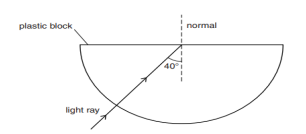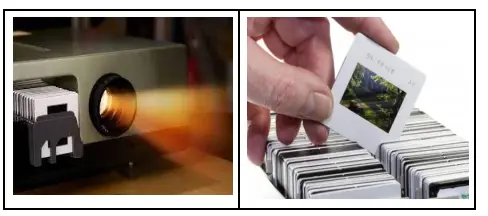Here in this article I have given some Class 10 CBSE Reflection and refraction extra questions. These are important and must try questions. Take a look at them go ahead and try them as a test to your knowledge. If you want to take them offline like the page and download the pdf. I have also given important links for class 10 CBSE maths and science study material (notes , assignment and downloads) please follow the links given at the end of the of the article.
Q1. What is the difference between reflection and refraction?
Q2.Refraction is caused by
a. different wave speeds.
b. more than one reflection.
c. displaced images.
d. bending.
Q3. What will happen to ray of light when it travels from rarer medium to a denser medium ?
Q4. What is absolute refractive index ?
Q5. If refractive index of glass is 1.65, What is the speed of light in glass. ?
Q6. The magnification M for a mirror is given by ?
Q7. Distinguish between real and virtual images?
Q8.What is the angle of reflection if a ray falls normally on a plane mirror?
Q9.What is the focal length of a plane mirror?
Q10. Why a mirror does has one principal focus while a lens has two principal foci?
Q11. Focal length of the lens in a photographic camera is 5cm.What is the power and nature of the lens?
Q12. Define linear magnification. Does it have any unit?
Q13. What does negative sign in the value of magnification of a mirror indicate?
Q14. Name the point inside the lens through which a ray of light goes undeviated?
Q15. Which of the two has a great power? A lens of short focal length or a lens of large focal length?
Q16. Define one dioptre?
Q17. A One Rupee coin lies in the bottom of a small container filled with water. As you look down on the coin, compared to its actual depth, it looks
a. closer.
b. farther away.
c. at the same depth.
Q18. Two medium with refractive index 1.41 and 1.56 are given. In which case
(a) Bending of light is more
(b) speed of light is more
Q19 Write three uses of concave mirror.
Q20.An object 1cm high produces a real image 1.5 cm high, when placed at a distance of 15 cm from concave mirror. Calculate the position of the image.
Q21. Find the power of a concave lens of focal length 2.5 m.
Q22. A man standing in front of special mirror finds his image having a small face,big tummy and legs of normal size .what are the shapes three parts of mirror?
Q23. Two lenses have power of (i) + 2.5D (ii) – 5D. What is the nature and focal length of each lens.?
Q24. Where is the image formed in a convex mirror, when the object is anywhere in front of it ?
Q25. A ray of light is incident on a concave mirror along its principal axis. What will be the angle of reflection?
Q26. Name the lens which always gives an erect and diminished image?
Q27. Which mirror is used as rear view mirror in vehicles and why ?
Q28. Define refractive index in terms of a speed of light in two media. What is the unit of refractive index?
Q29. A ray of light strikes the mirror at 14o , What is the angle of reflection?
Q30. What is refractive index of air? Why the refractive index of other medium is taken with respected to air?
Q31.(i)Explain why the refractive index of any material with respect to air is always greater 1.
(ii) In the figure below a light ray travels from air into the semi-circular plastic block. Give a reason why the ray does not deviate at the semi-circular boundary of the plastic block.

(iii) Complete the ray diagram of the above scenario when the light ray comes out of the plastic block from the top flat end.
Q32. A 10 cm long pencil is placed 5 cm in front of a concave mirror having a radius of curvature of 40 cm.
(i) Determine the position of the image formed by this mirror.
(ii) What is the size of the image?
(iii)Draw a ray diagram to show the formation of the image
Q33.

The above images are that of a specialized slide projector. Slides are small transparencies mounted in sturdy frames ideally suited to magnification and
projection, since they have a very high resolution and a high image quality. There is a tray where the slides are to be put into a particular orientation so that the viewers can see the enlarged erect images of the transparent slides. This means that the slides will have to be inserted upside down in the projector tray.
To show her students the images of insects that she investigated in the lab, Mrs. Iyer brought a slide projector. Her slide projector produced a 500 times enlarged and inverted image of a slide on a screen 10 m away.
(a) Based on the text and data given in the above paragraph, what kind of lens must the slide projector have?
(b) If v is the symbol used for image distance and u for object distance then with one reason state what will be the sign for v/u in the given case?
(c) A slide projector has a convex lens with a focal length of 20 cm. The slide is placed upside down 21 cm from the lens. How far away should the screen
be placed from the slide projector’s lens so that the slide is in focus?
(d)When a slide is placed 15 cm behind the lens in the projector, an image is formed 3 m in front of the lens. If the focal length of the lens is 14 cm, draw
a ray diagram to show image formation. (not to scale)
Links related to concerned chapters (Reflection and refraction of light)
- Reflection of light notes
- Formative Assignment(reflection)
- Unsolved test paper(reflection)
- Refraction of light notes
- Formative Assignment(refraction)
